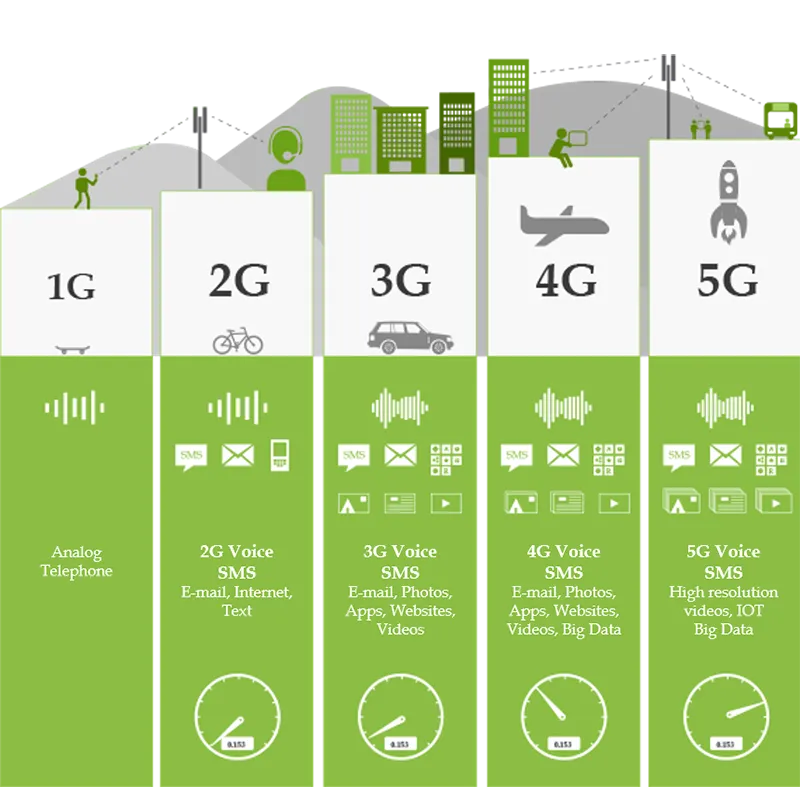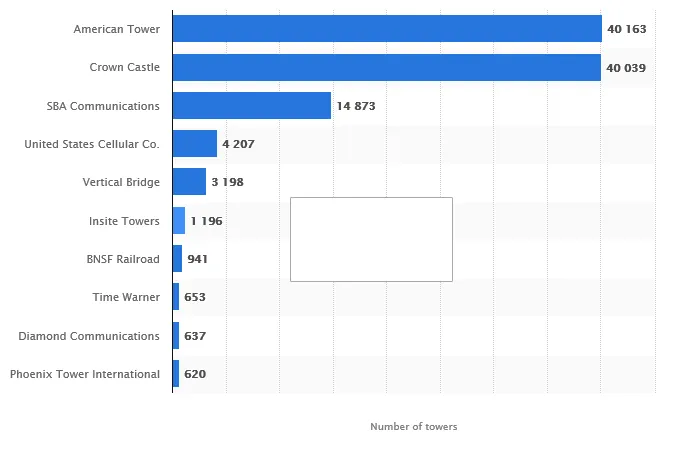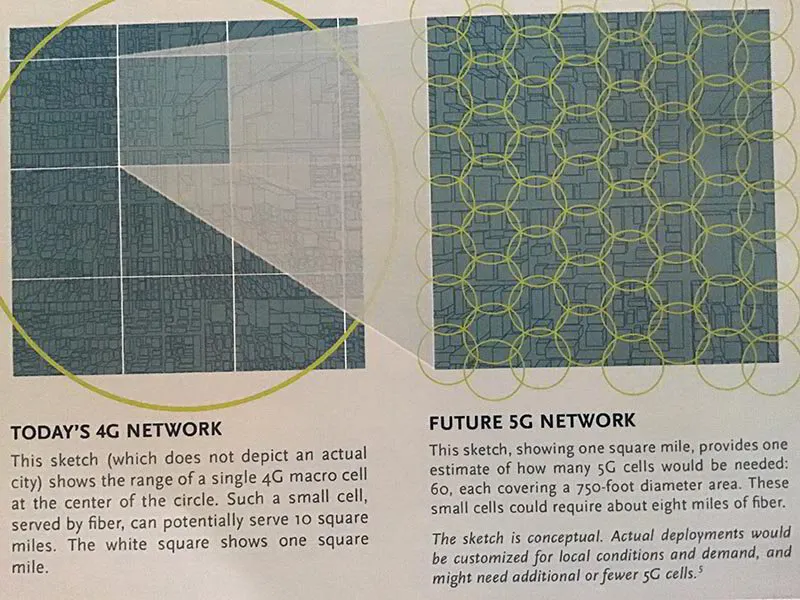City Networks
5G technology is being rolled out around the United States market by market, carrier by carrier. Smart Cities understand that becoming a Connected City is a fundamental pillar required to transform how they operate.
ABI Research measured the US economy and determined that 4G had $4.96 trillion of value in 2018. It began to deploy in 2007. 5G has exponentially more capacity and capability. It will begin to significantly roll out in 2020 and begin to have an impact in 2021. Developing the required infrastructure is a multi-year effort that will require multiple stakeholders.
Economic Development-4G 2018(ABI Research)
Direct Revenues-$1.1 trillion for 4G subscriptions
Indirect Revenues-$500 billion for supply chain from devices, infrastructure and other
Productivity Gains-$3.3 trillion due to the availability and utilization of connectivity in U.S. Cities
5G productivity gains are projected to be even larger but not significant until 2024 or 2025.
5 Generations of Wireless Technology
The benefits of Dense 5G Networks are:
Lower Latency, Higher Capacity, Better Coverage, Lower Cost Per Meg of Bandwidth
5G Network Densification
Network Densification is the process of increasing the number of cell sites by adding small cells and fiber optics in a geographic coverage area.
According to the Cellular Telecommunications Industry Association (CTIA), the USA is served by approximately 349,344 macro cell towers. These were deployed over the past 25 years.
Many experts are predicting between 750,000 and 1,000,000 small cells will be deployed in the next 10 years. This means that cell networks will increase 3x in terms of cell transmission sites.
Here are the top 10 tower owners of towers according to Statista:
American Tower, Crown Castle and Vertical Bridge’s sister company, Extenet are the leaders in small cell deployments in the United States.
4G vs. 5G Cell Structure-Densification
One of the fundamental architectural differences of 5G vs 4G is the configuration of the cells serving a city. 4G utilizes Macrocell technology from towers supplemented with Distributed Antenna Systems (DAS) for the largest indoor sites such as airports, stadiums and large office buildings. 5G will utilize small cell technology to get the antennae closer to the user.
The primary benefit of this architecture is:
Lower Latency, Higher Capacity, Better Coverage and Lower Cost per Meg.
Here is a visual representation of the 2 Architectures. In 4G architecture large cells cover a geographic area. The inset shows the density of 1 of these cells when small cells are deployed.









